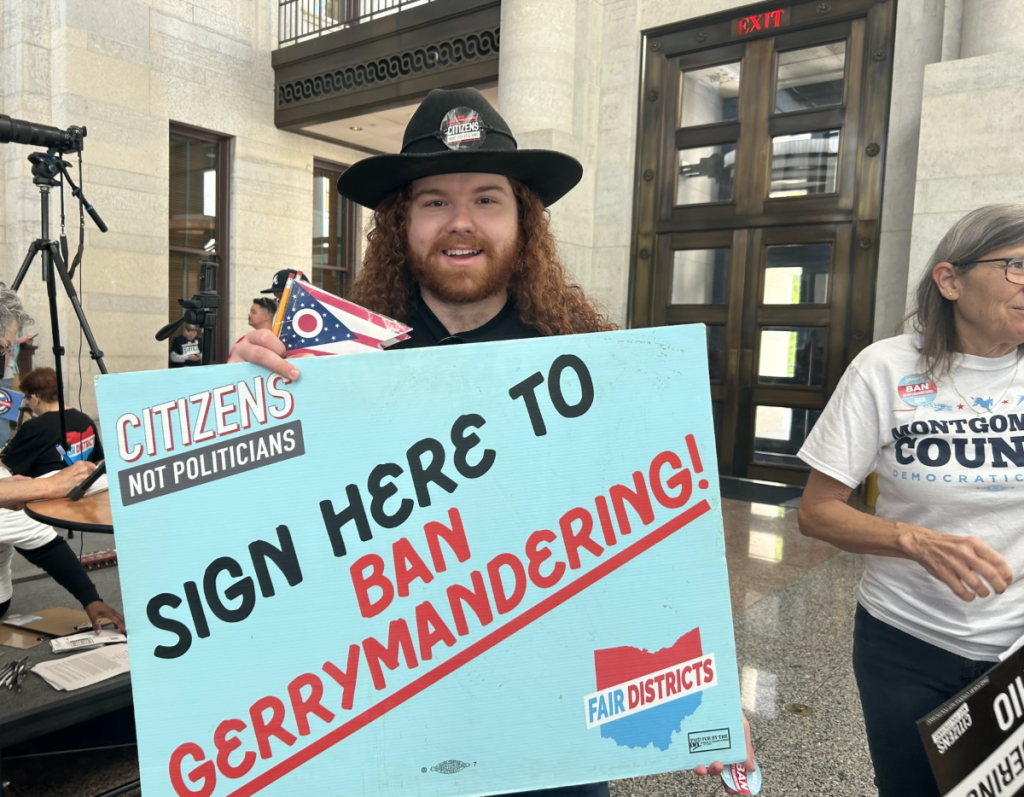News
How a redistricting amendment might affect candidates on Ohio’s fall ballot
By: Jo Ingles | Statehouse News Bureau
Posted on:
COLUMBUS, Ohio (Statehouse News Bureau) — Redistricting reform supporters are waiting to see if they make the Nov. 5 ballot – though it seems likely, since they submitted 300,000 more signatures than they needed. That would make it the only statewide issue on the fall ballot, since the group backing a minimum wage hike failed to get the required signatures.ic in
The statewide ballot will feature a presidential race and a hotly contested contest for the U.S. Senate as Democratic incumbent Sherrod Brown faces Republican Northeast Ohio businessman Bernie Moreno. All 15 of Ohio’s Congressional seats are on the ballot, along with all 99 Ohio House seats and 16 of 33 Ohio Senate seats. There are three seats up on the Ohio Supreme Court, which has four Republicans and three Democrats now.

Former Ohio Supreme Court Chief Justice Maureen O’Connor, a Republican who has served in a variety of offices, said if the amendment makes the ballot and voters approve it, it would take power away from politicians and give it to Ohioans.
“Citizens decide who serves here, not the politicians who scheme and rig the game to stay in power forever,” O’Connor said.
The effort to pass redistricting reform is bipartisan – most of the groups backing it are aligned with Democrats but there are also some Republican supporters, creating some odd political bedfellows. And it comes after seven Ohio Supreme Court rulings that maps approved by the Ohio Redistricting Commission were unconstitutional, but federal court rulings approved them anyway. More than a thousand people submitted testimony against the current maps and the legislative and congressional district line-drawing process.
Turnout could be lower than usual for a presidential election in Ohio, said Paul Beck, professor emeritus of political science at Ohio State University.
“The two candidates right now, Biden and Trump, are possibly the most disliked candidates of any presidential twosome that we’ve had certainly in my lifetime,” Beck said.
So Beck said the redistricting issue could add interest to the ballot for some voters.
“It could have an effect on turnout. I think that voters in Ohio are quite possible fed up with the games that have been played with redistricting. And they might be willing to turn out when they otherwise might not,” Beck said.
Stephen Brooks, political science professor emeritus at the University of Akron and former associate director of the Bliss Institute of Applied Politics, agreed with Beck’s assessment.
“The main driver is the number of new voters or infrequent voters who are energized by the ballot issue and if you have a ballot issue like the abortion issue where there are a lot of people who are not involved with politics but are not involved with that matter, that does increase turnout,” Brooks said.
But Brooks cautioned there is reason to believe this redistricting reform issue could play out differently than the abortion and reproductive rights amendment did last year.
“This is a really an ‘inside baseball’ issue,” Brooks said. “People who are really adamant and interested in politics will show up but that does not reach very far in the non-voting or infrequent set of people.”
Both Brooks and Beck think a lot will depend on messaging. The Citizens Not Politicians campaign is already making an anti-politician message – something that’s likely to resonate with many voters.
Last year, a Pew poll showed only 4% of Americans think the political system is working extremely or very well and showed just 16% of the respondents trusted the government to do the right thing most of the time.

